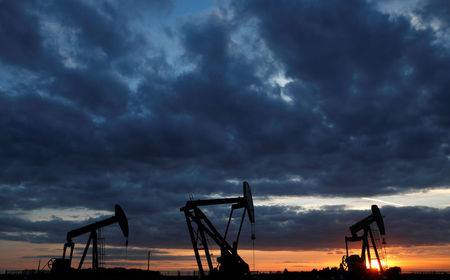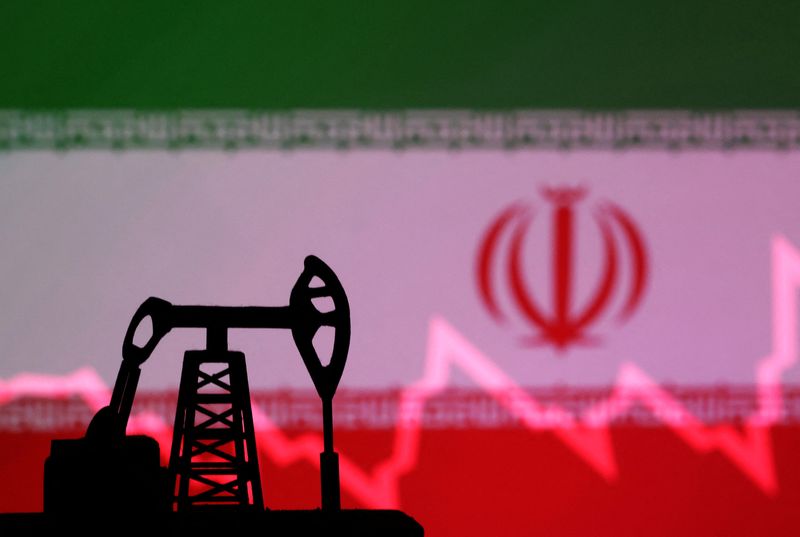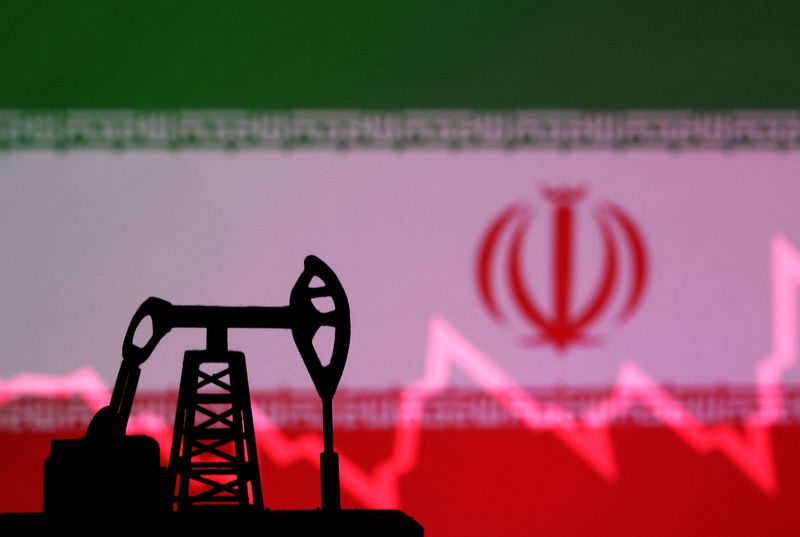Commodities
This indicator says oil prices will bottom soon: analysts

Oil prices are set to form a bottom in the coming months, McClellan Financial Publications analysts argue.
Recent gold price trends, adjusted forward by 19.8 months, can be compared to prices, a shift that aims to highlight how gold’s price movements tend to echo in oil prices after that specific interval.
While not a flawless model, it generally provides strong accuracy, the report states. Occasionally, discrepancies occur, such as when Russia’s invasion of Ukraine disrupted the oil market. However, after each such divergence, prices consistently strive to realign and return to their historical correlation.
“Coming up, this model says that we have a bottom due in mid-2024, followed by a rise toward the end of the year,” The McClellan Market Report says.
“That oil price rise is not going to be good news for any federal politicians who may be running for reelection in November. And if the recent rally in gold prices (just off the right end of this chart) keeps going higher, that is going to mean higher oil prices 19.8 months later,” it added.
In late 2023, crude oil prices declined earlier than expected, missing the predicted peak that gold price movements had indicated would occur later that year. However, oil prices have since realigned with the pattern, the report highlights.
The forecast indicates that the forthcoming bottom will ideally occur around June or July 2024. That said, it’s worth noting that turning points might not precisely follow this timeline and could occur slightly earlier or later.
remove ads
.
The key takeaway is that a bottom is expected, though more price declines may occur before reaching that point.
“Then as summer gets closer, we should turn to other indicators to home in on signs that the price bottom for oil is arriving, and/or that an upturn is starting,” the report notes.
Commodities
Oil prices slip slightly lower; Iran in focus after helicopter crash

Investing.com– Oil prices slipped lower Monday, handing back early gains after the confirmation of the death of Iran’s President in a helicopter crash.
At 08:30 ET (12:30 GMT), fell 0.5% to $83.53 a barrel, while dropped 0.6% to $79.10 a barrel.
Iran stability in focus after helicopter crash
Crude prices rose early Monday following reports that a helicopter carrying Iranian President Ebrahim Raisi and his foreign minister crashed in mountainous terrain due to bad weather conditions over the weekend.
Raisi was seen as a contender to become Iran’s next supreme leader – the highest political position in the oil-producing nation.
His death was later confirmed by state media, but tensions have eased with the Iranians not accusing any outside bodies of foul play.
Additionally, the county’s oil policy should not be affected given current Supreme Leader Ayatollah Ali Khamenei holds ultimate power with a final say on all state matters.
Fears that continued instability in the Middle East could disrupt oil supplies from the region have been a key point of support for oil prices, keeping trading comfortably above $80 for most of 2024.
Fears that continued instability in the Middle East could disrupt oil supplies from the region have been a key point of support for oil prices.
Rate uncertainty, OPEC anticipation keeps caution in play
That said, there remains a great deal of caution with the oil markets ahead of a slew of upcoming cues on U.S. interest rates and the economy this week.
The of the Federal Reserve’s late-April meeting are due this week, as are speeches from a string of Fed officials.
Markets were also on edge before a meeting of the Organization of Petroleum Exporting Countries and allies (OPEC+), which is scheduled for June 1. Any updates on the cartel’s plans to maintain ongoing production cuts will be squarely in focus.
“We might have to wait for further clarity from OPEC+ and its output policy for the second half of the year to provide any impetus to the market and for it to break out of its recent range,” said analysts at ING, in a note.
(Ambar Warrick contributed to this article.)
Commodities
Oil steadies after death of Iran’s president, Saudi king’s ill health

By Natalie Grover and Deep Kaushik Vakil
LONDON (Reuters) -Oil prices held steady on Monday amid political uncertainty in major producing countries after Iran’s president died in a helicopter crash and Saudi Arabia’s crown prince deferred a trip to Japan on account of his father, the king’s, health.
was down 35 cents at $83.63 a barrel by 1205 GMT. The U.S. West Texas Intermediate (WTI) June contract, set to expire on Tuesday, edged 43 cents lower to $79.63 a barrel. The more-active July contract was down 38 cents at $79.2.
Iranian President Ebrahim Raisi, a hardliner long seen as a potential successor to Supreme Leader Ayatollah Ali Khamenei, was killed in a helicopter crash in mountainous terrain near the Azerbaijan border, officials and state media said on Monday.
Iranian oil policy should be unaffected by the president’s sudden death, as Khamenei holds ultimate power with a final say on all state matters.
Separately, Saudi Arabian Crown Prince Mohammed bin Salman postponed his visit to Japan, scheduled to begin on Monday, because of a health issue with his father King Salman, said Japan’s Chief Cabinet Secretary Yoshimasa Hayashi.
Saul Kavonic, an energy analyst at MST Marquee, said the market is already accustomed to Crown Prince Mohammed Bin Salman’s leadership in the energy sector.
“Continuity in Saudi strategy is expected regardless of this health issue,” he said.
In Europe, another Russian energy facility was hit. The Slavyansk oil refinery, located in the Krasnodar region, was damaged after a weekend drone attack, state-run TASS reported on Monday, citing a company security official.
Russia has reported a rise in Ukrainian attacks on its territory since its forces opened a new front in northeastern Ukraine’s Kharkiv region earlier this month.
“From here, we expect overall market fundamentals to improve and see similar inventory draws and price action as observed last summer, with Brent oil moving $10 higher from current levels by September,” JPMorgan analysts wrote in a note late Sunday.

The Organization of the Petroleum Exporting Countries and allies, together known as OPEC+, are scheduled to meet on June 1.
“The market also appears increasingly numb to developments on the geopolitical front, likely due to the large amount of spare capacity OPEC is sitting on,” said Warren Patterson, head of commodities strategy at ING.
Commodities
Factbox-Main facts about the copper market as prices hit record highs

LONDON (Reuters) – Copper surged to record highs on Monday as a recent rally triggered by short covering created momentum for speculators and funds to bet on higher prices of the metal.
Below are the main facts about the market, sourced from the International Copper Study Group (ICSG), the International Copper Association (ICA), and Reuters data.
INDUSTRIAL USES
Copper is used in the power and construction industries and is widely expected to benefit in future from the green energy transition via additional demand from the electric vehicle sector and new applications including data centers for artificial intelligence (AI).
Equipment manufacturing is currently the largest end-use sector for copper, followed by construction and infrastructure.
Global apparent use of refined copper rose from 10 million metric tons in the late 1980s to 26.5 million tons in 2023 as Asia became the largest consumer with a 70% share of consumption. As of 2022, China was the largest consumer of refined copper with usage of 14.7 million tons.
PRODUCTION CHAIN BY TYPE AND BY REGION
Deposits of copper, one of the first metals used by humans, are widespread around the globe. Scrap accounts for significant amounts of global supply annually.
Copper’s primary production chain starts from the mining of copper-bearing ores, then moves to production of copper concentrates typically containing around 30% copper.
The smelting process transforms concentrate into a matte containing 50-70% copper. The matte is processed into a blister copper of 98.5-99.5% copper content. In the next step, refined cathodes are produced with 99.99% copper content.
Copper mine production totalled 22.4 million tons in 2023, with Chile, Peru and Democratic Republic of Congo (DRC) being the largest producers. Production of refined copper, including secondary or scrap, totalled 26.5 million tons in 2023, with China being the largest producer.
MAJOR EXPORTERS AND IMPORTERS
Global copper trade includes all major products in the processing chain – concentrates, blister and anode, cathode and ingots, scrap and semi-fabricated products.
Chile, Peru and Indonesia are major exporters of copper ores and concentrates, while China, Japan and South Korea are major importers of these products.
In the market for copper blister and anode, Zambia, Chile and DRC are major exporters, with China and India being major importers.
For the refined copper trade, Chile, DRC and Russia are major exporters, while China, the U.S. and Italy are major importers.
SUPPLY-DEMAND BALANCE
The global 26.5 million-ton refined copper market was balanced in 2023, but faces a surplus of 162,000 metric tons this year and 94,000 tons in 2025, according to the ICSG, as refined production is forecast to rise by 2.8% in 2024 and 2.2% in 2025.
However, the supply of copper from mines has been lower than expected so far this year due to the slower ramp-up of a number of projects, delays in new projects and the December closure of First Quantum (NASDAQ:)’s major Cobre Panama mine.

This has tightened the supply of copper concentrate to smelters in China and is visible in collapsing refining and treatment charges (TCs) in the country.
Despite tight supply of copper concentrate, current demand for copper in China is relatively weak as inventories in warehouses monitored by the Shanghai Futures Exchange are near four-year highs and the premium to import copper into China’s Yangshan area is at zero.

 Forex2 years ago
Forex2 years agoForex Today: the dollar is gaining strength amid gloomy sentiment at the start of the Fed’s week

 Forex2 years ago
Forex2 years agoHow is the Australian dollar doing today?

 Forex1 year ago
Forex1 year agoUnbiased review of Pocket Option broker

 Forex2 years ago
Forex2 years agoDollar to pound sterling exchange rate today: Pound plummeted to its lowest since 1985

 Cryptocurrency2 years ago
Cryptocurrency2 years agoWhat happened in the crypto market – current events today

 World2 years ago
World2 years agoWhy are modern video games an art form?

 Stock Markets2 years ago
Stock Markets2 years agoMorgan Stanley: bear market rally to continue

 Economy2 years ago
Economy2 years agoCrude oil tankers double in price due to EU anti-Russian sanctions

































